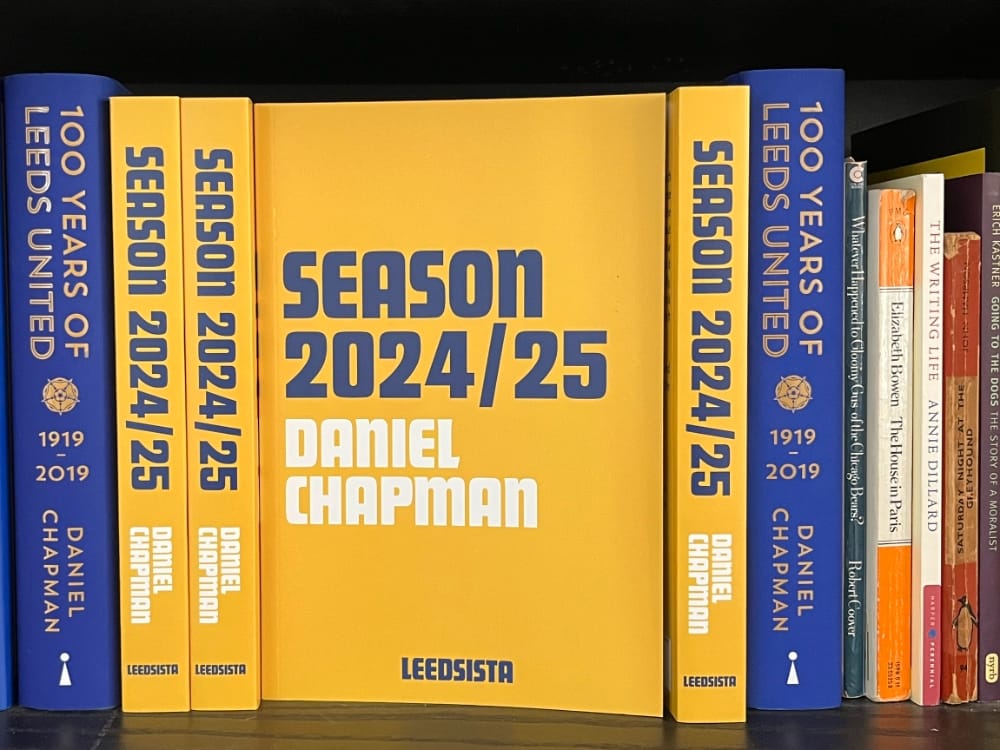Transfers, guesses and data panic
English football seems to be shifting its emphasis towards NFL style front-office departments as a means, I suspect, of making investors feel better about their gambles.
Writing about Bill Fotherby's transfer targets for Leeds United has put me into a pleasant whirl of 1990s nostalgia, noticing how much I knew and still know about the players Leeds were being linked with. Diego Maradona is easy, but Trevor Steven, Chris Waddle, David Rocastle, Duncan Ferguson, Brian Deane — coming up next is Des Walker — in football households, at least, these were household names.
Simultaneously I've been trying to keep up with 2025's transfer market and, well, Lukas Nmecha? Jaka Bijol? Gabriel Gudmundsson? Sebastiaan Bornauw? I'm trying to learn, honest I am, but the most interesting thing I've read about this lot so far is that Bornauw grew up in Monte Carlo. I wonder if he knows Ken Bates.
It's always important to remember that when it feels like football has changed it's probably me that has changed. I know Trevor Steven and Chris Waddle so well because, when they were playing, I was at school with a sticker album and hours to devote to learning footballer's names. Perhaps the teens of 2025 are well versed in the finer points of Lukas Nmecha's career — and if they follow Manchester City, where he was a youth player, they probably are.
Leeds United's Championship winning season, game by game, as written at Leedsista.com.
This 350 page Royal format softback book compiles every match report and essay about the title-winning 2024/25 season so you can relive the anxiety, and the glory, game by game.
They're here! And I'm posting all the pre-orders out as fast as I can.
(You can still buy them — although I've had to do another print run straight away and annoyingly the delivery has been pushed to Wednesday 16th July before I have that stock in.)
Thanks to everyone who has bought one so far!
But Leeds United's absence from the top flight since the start of the century, apart from the hallucinatory Covid-limited trip from Marcelo Bielsa to Sam Allardyce, means the 1990s are still the Peacocks' last stable reference point, and 1990's post-promotion transfer activity is still easily recalled. Howard Wilkinson had already stocked the squad with fame in Division Two — Gordon Strachan, Chris Fairclough, Mel Sterland, Vinnie Jones and Lee Chapman all came from Division One. Over the next two years John Lukic, Gary McAllister, Chris Whyte, Rod Wallace, Tony Dorigo and Steve Hodge all arrived with famous names, at a time when footballers were much less famous than they are now.
It is not just, I swear, that the most difficult thing about adapting to being in my thirties is realising that I am, in fact, well into my forties. But it's hard to phrase this without sounding like I'm shaking my fist at clouds while saying: there are simply too many footballers to keep track of now. That is the first reason it's hard to keep up, though. Wilkinson was signing those players in an era when football teams had eleven players and two subs and it was easy to keep track of who was who. Since then benches have got longer and longer, squads have got bigger and bigger, and now, if you want to know who Chelsea's goalkeeper is, first you need to know what day of the week it is.
The second factor is how inflationary fees and wages have inspired football's technocrat classes to 'explore new markets', which is to say they're plundering foreign leagues for 'undervalued' — cheap — players: a form of footballing outsourcing, essentially. This has combined with Profit & Sustainability rules to make transfers no longer a race for the best players but a scavenger hunt for the cheapest. Data scouts scour spreadsheet after spreadsheet in search of a player Brighton have somehow missed. Fabrizio Romano has a struggle now because while Mbappe to Madrid essentially tweets itself, ninety per cent of transfer stories now require a follow up explanation of who the actual heck he's even talking about, and what the hell a Sunderland even is.
To keep reading, please become a More to Read member
Leedsista is supported by Leeds fans who think decent writing about their football team is worth £3 a month.
